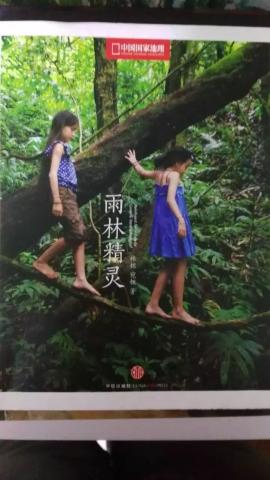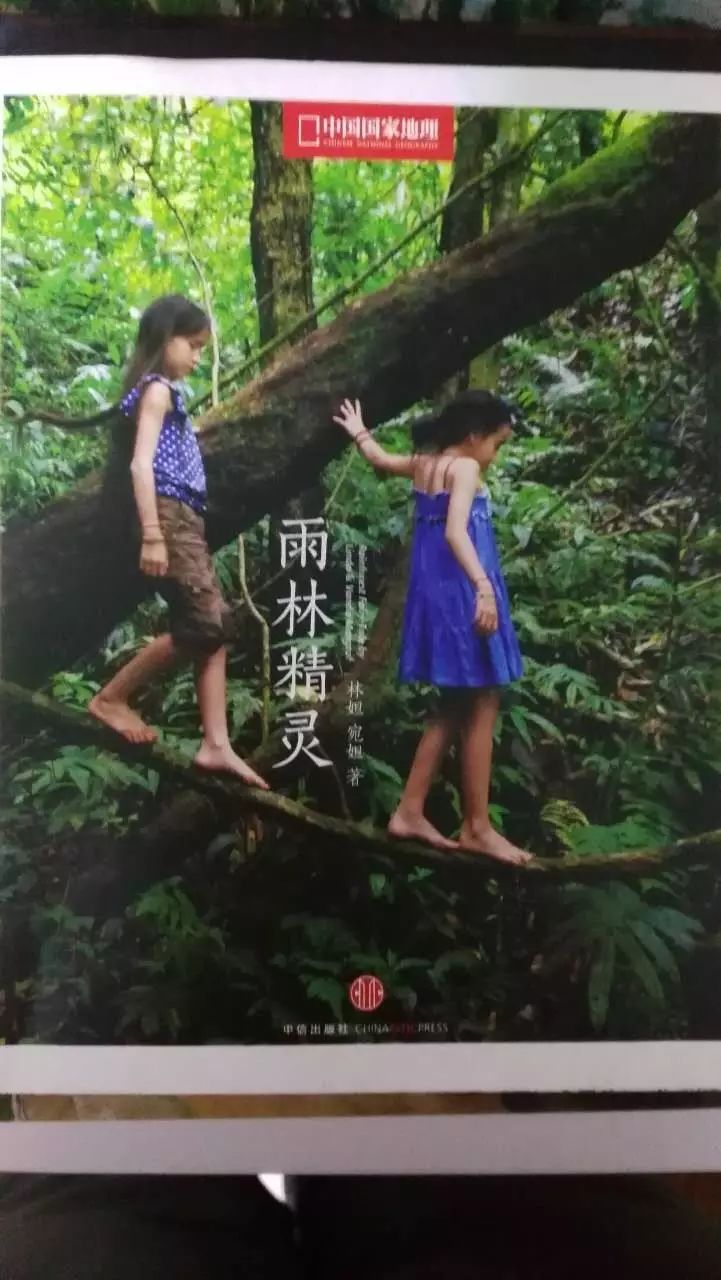
Yearning for the warm sunshine and smog-free skies in winter, I went to Yunnan during the Spring Festival. After research and thinking, the itinerary for Xishuangbanna, Tengchong and Kunming was determined. Since Yunnan’s aviation design basically transfers to Kunming, our route can only be: Kunming-"Banna-"Kunming-"Tengchong-"Kunming. We hope there will be more direct routes in the future.
(1) Let’s first talk about Xishuangbanna, located in southern Yunnan.
Most people have heard of "Beautiful Xishuangbanna", "Phoenix Tail Bamboo in the Moonlight", and famous educated youths such as Wang Xiaobo and Chen Kaige. However, these stories are very far away, and now Xishuangbanna has almost been forgotten by the mainlanders. People are more interested in Lijiang and Dali.
It was backpackers abroad who rediscovered it. However, domestic tour groups are still the way they were done more than 30 years ago. We found it in Yunnan from the Lonely Planet series.
In fact, it really came into our sight again thanks to the book "Rainforest Spirit". A German botanist came here alone because of his love for the rainforest. He found a like-minded Dai woman and chose a rubber forest beside the Lancang River to recreate the rainforest. Their two little girls have lived in a cabin in the rainforest since childhood.


Banna is the only tropical rainforest climate zone in China. It only has two seasons, dry and rain, and there is no concept of winter. The Spring Festival is probably the coolest and most comfortable time. It is said that the high temperature and high humidity during the rainy season are mostly related to the diet and living habits of the Dai people. I forgot to mention arabica coffee in the last food article, so I must mention it here. Under the influence of foreigners here, the level of cafes here is not low.
The rainforest is a major feature of Banna. The best place to appreciate tropical plants is the Botanical Garden of the Chinese Academy of Sciences.
The scenic spots in Xishuangbanna are far away and scattered. The only place you can go directly to by bus is the Botanical Garden. Traveling independently is not as convenient as traveling with a group. But this doesn’t bother us, we only go where we need to go most. The rest of the time is spent wandering around the city and enjoying it.

There are many types of plants here:

It’s also very pleasant to just treat it as a park:

The Dai people in Xishuangbanna are the majority ethnic group. All of them believe in Theravada Buddhism. There are 5 or 6 temples in a small urban area. The temples are not large in size, but they are very delicate and friendly, making people feel at ease, which is different from the atmosphere of Tibetan Buddhism. This is the main Buddhist temple, very popular:

Elephants and peacocks are auspicious animals of the Dai people. There are a large number of peacock and elephant sculptures in the city. The houses are painted with peacock patterns.

The shapes of the street lamps are all very special, including drums, gongs, pineapples, pottery (pottery making is a folk craft here and belongs to red pottery), etc. This shape is a kind of pottery here:

The covered bridge in Manting Park is in Thai style:

Many years later, I finally arrived at the Lancang River in Xishuangbanna. The Lancang River is known as the "Danube River of the East". It originates from the snow-capped mountains of Qinghai. It was called the Mekong River after going abroad (don't mention the XX tragedy to me). It later went out to sea in Vietnam and merged into the vast Pacific Ocean.
Because it is the dry season, the river water is very clear. Big yellow duck on the Lancang River:

There is also a botanical garden in Xishuangbanna city: Tropical Flower Garden. This is the King Lotus in the garden:

The cash crops here are rubber and bananas. For profit, a large number of rainforests were cut down and turned into monotonous rubber forests all over the sky. The story of protecting the rainforest in "The Rainforest Elf" is also due to this.
The rubber tapping performance seen in the Tropical Flower Garden is quite magical:

That’s all for now.
(2) Tengchong, located in western Yunnan
Leaving Xishuangbanna, we got off the airport in the evening (because Tuofeng Airport is on the top of a volcano), passed through Tengchong city, and arrived at Heshun Ancient Town, 3 kilometers away:

The early morning in the ancient town is particularly refreshing:

With all kinds of brands all over the wall, it seems that there are only three things in the ancient town: inns, restaurants and jade sellers.

This kind of wood carving is a traditional craft with very fine workmanship, and its name is "Shenma" (that's really the name)

Heshun's school is very traditionally decorated, which is very similar to Dali:

See Heshun Ancient Town from the temple on the mountain:

Tengchong is famous for its hot springs. Inside Atami Volcano Park, on the wall are the records and accompanying pictures of Xu Xiake’s travels to Tengchong:

Boiling springs along the road:


The largest spring is called Dagunguo, which is very vivid:

Tengchong is picturesque:

It is really hard to imagine that there were several years of fierce fighting in such a remote place during the Anti-Japanese War. Heshun on the side of Laifeng Mountain was also one of the places where fierce battles with the Japanese army took place. This is the memorial statue of the Flying Tigers:

The newly built Anti-Japanese War Memorial Hall is worth a visit:

There are estimated to be more than 100,000 names on the wall of the expeditionary force directory, which is a good memorial:

(3) Kunming
The purpose of coming to Kunming is to leave. Kunming has become a busy tourist transit point. It is estimated that not many people come here for even two days. We spent more than a week experiencing the slow life in Kunming in this place we pass by every time.
The must-see red-billed gulls in Kunming in winter fly to Dianchi Lake from the east every morning:

There is also the Longmen Grottoes in Xishan

However, the pollution in Dianchi Lake is still serious. From the West Mountain, half of the lake is blue and half is green. The green areas are areas with severe blue algae.

The railway museum is very interesting, and there is also a meter-gauge train ride:


The museum’s own restaurant, bar, pottery bar, and gallery are tastefully decorated:


At the former site of the Southwest Associated University in Kunming, you can visit its museum to see the style of those past masters:

This is the earliest school of Yunnan University and has a long history:

There are several places on the campus of Yunnan University designed by Liang Sicheng and Lin Huiyin.

The Yunnan Ethnology Museum is also worth a visit. There are 26 ethnic minorities in Yunnan. This one may be from the Wa ethnic group. Pay attention to her eyes:


The Dounan flower market in Kunming is said to be the largest in the country. I heard from locals that the flowers after 10pm are the first-hand market. They are traded directly with flower farmers and are the freshest and cheapest:


When you come to Kunming, it is highly recommended to go to the Yunnan Art Theater to watch the reflections of Yunnan. Featured products:


The final performer in the peacock dance "The Spirit of the Bird" is Yang Liping's apprentice Yang Wu:

I visited three places, each with its own interesting features. Xishuangbanna is just a place to wander around the urban area, which is very leisurely; the best thing about Tengchong is Heshun Ancient Town, the urban area is relatively boring; Kunming, as the provincial capital, is very diverse, and museums and various performances are worth seeing.
Yunnan tourism has had a bad reputation in recent years. Judging from what we encountered, the people here are very friendly, and the people in Xishuangbanna even feel very honest. I think it may be that low-priced tour groups put too much pressure on people and caused many bad phenomena. It is better to travel by yourself here. It is better to visit less places and have fun.
